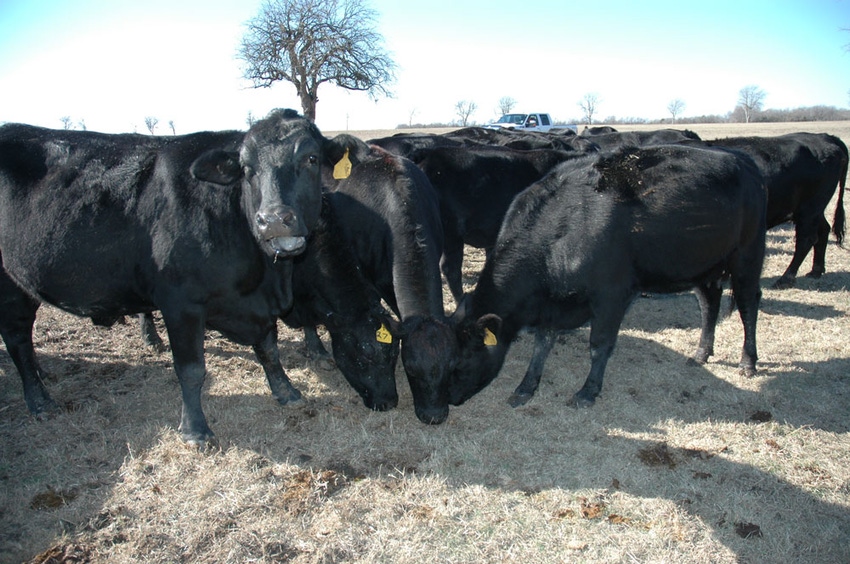
While Southwest beef producers remain cautiously optimistic that 2013 will be a rebuilding year, the threat of continued drought, spiraling beef prices and a forecast drop in beef consumption has many worried that another year of misfortune could spell disaster for cattlemen hoping to rebuild after two years of disappointing setbacks.
“Quite frankly, we are facing a period of unparalleled challenge in the industry with an expected decrease in cattle production between 4.5 percent to near 5 percent this year and probably again in 2014, the second largest year-over-year decrease in about 35 years,” says Derrell Peel, Oklahoma State University Cooperative Extension livestock marketing specialist. “We’re looking at decreases in slaughter numbers and an uncertainty in consumer reaction to higher beef prices.”
Peel says the production shortfall will be offset by lower beef exports and higher beef imports, but predicts beef wholesale and retail prices will rise, providing some relief to beef producers if beef consumption remains steady - which may not happen.
“We’re probably going to see a 3.5 percent drop in domestic consumption this year similar to the year-over-year decrease in 2011 compared to 2010," he said.
In 2011, domestic per capita beef consumption decreased 3.8 percent because of a sharp increase in beef exports despite a decrease in beef production. In 2004 there was a sharper production decrease, but per capita beef consumption that year increased nearly 2 percent because of a sharp drop in beef exports.
“Production losses this year and next could run as high as 10 percent, the largest percentage decrease since the late 1970s, and we could see consumption drop by as much as 5 percent next year, slightly more than this year,” Peel adds. “So recovering from two years of serious drought conditions depends on a sufficiently wet winter and spring season if there is any hope of reversing the trend toward lower production and consumption.”
Peel says he remains optimistic the industry will recover in time, but the question remains when will the drought be broken.
“Another year of extreme drought and conditions could certainly worsen,” he predicted.
Dire Predictions for South Texas
In spite of January rains in South Texas, Texas AgriLife cattle specialist Dr. Joe Paschal says drought conditions remain high and says it’s far too early for producers to start rebuilding cattle herds.
“If you look at the latest drought monitor you will see South Texas is still in the red when it comes to needed moisture and I’m afraid it’s far too early to be thinking about rebuilding herd levels. Even with continued rainfall this month and into the spring season, most producers are going to need to replant forage in their pastures,” he said.
Paschal and other AgriLife officials agree that successfully rebuilding beef production in Texas depends on changes in lending policies that will affect availability of capital to reinvest in cattle; balancing forage recovery with cattle inventory recovery; systematic approach to evaluating options for securing replacement females; and developing a logical and systematic system to evaluate the worth of available replacement females.
“Even in the eastern parts of the state, around College Station for example where they have received greater rainfall, it’s still going to take some time for forage to recover before we can think about rebuilding herds to pre-drought levels,” Paschal adds.
He says producers will have the urge to rebuild as soon as possible, but it will be important to match rebuilding strategies with management of forage resources that allow for pasture recovery. Whatever the source of replacement cattle, he warns pasture recovery will need to be the priority.
Meanwhile, Peel says choice boxed beef has been trapped in a narrow range between $192 and $198 per hundredweight for the past several months. But while retail beef prices were flat to slightly lower through most of 2012, they jumped sharply in November, a trend that will continue this year.
"It is not really a question of whether retail prices will go up but rather a question of how much and how fast," he said. "Beef demand remains the biggest unknown in the beef industry and only time will tell just how severe the squeeze will get.”
In spite of herd production in both states over the last two years, Peel says between Texas and Oklahoma there is still around 5.5 million head of beef cattle.
“I think we will see a day when the beef industry recovers across the region, but there are so many factors involved it’s impossible to say exactly when that will happen. But there is still optimism among producers and when the rains come and forage becomes available again then we will start to see a return of better days,” he predicts.
“There are still a lot of folks out there who think sustained rainfall this year will be forthcoming,” Paschal agrees. “And the sooner the rains come the sooner we can gain a lot of lost ground. But it’s going to take some time to rebuild.”
About the Author(s)
You May Also Like




